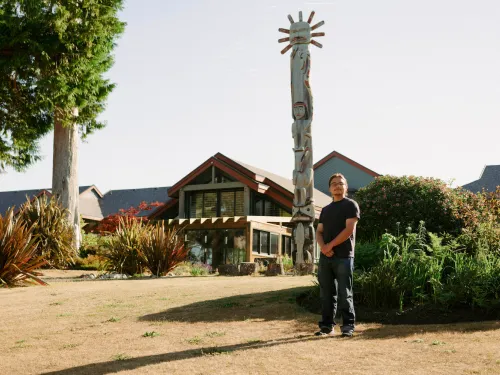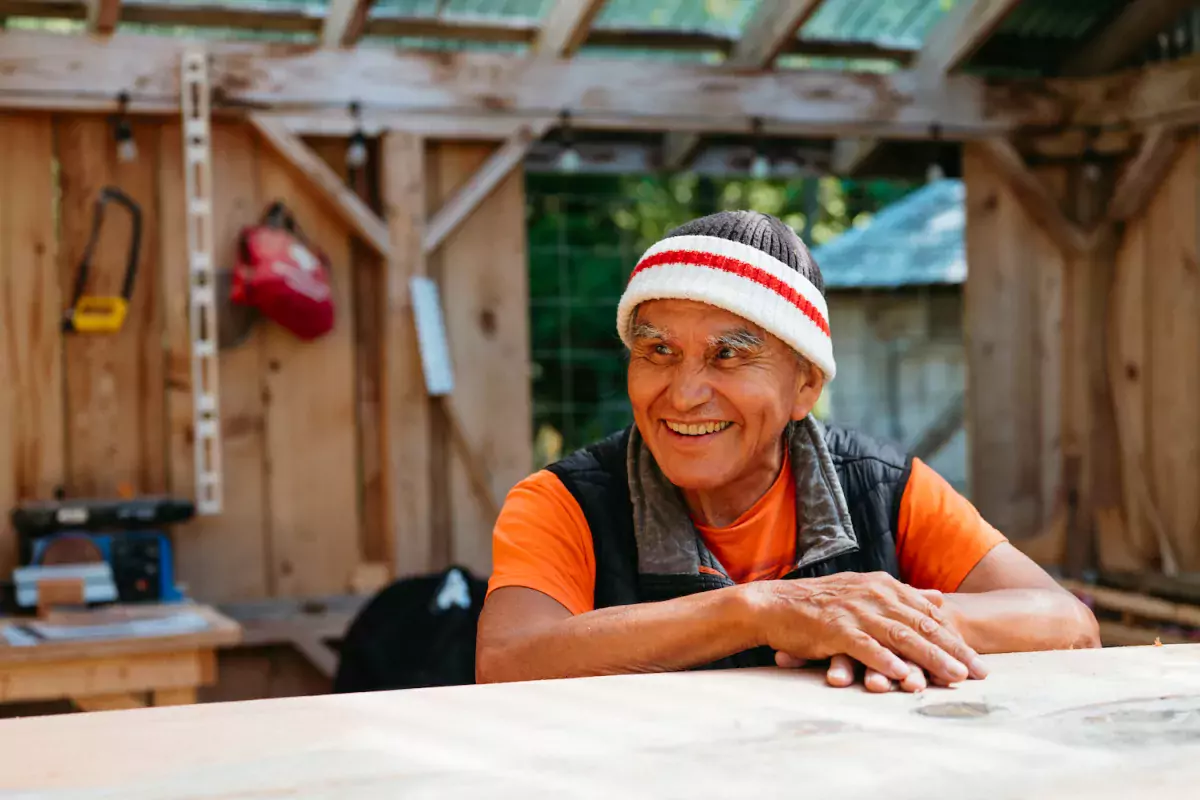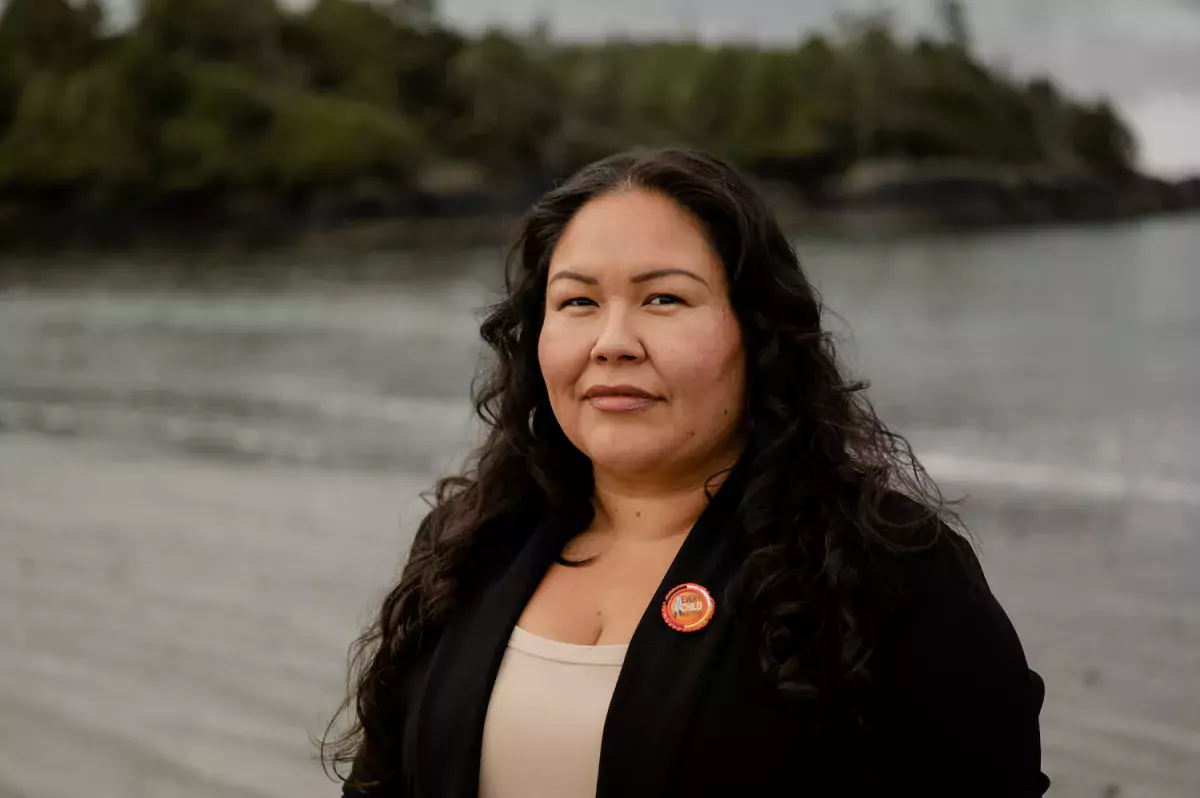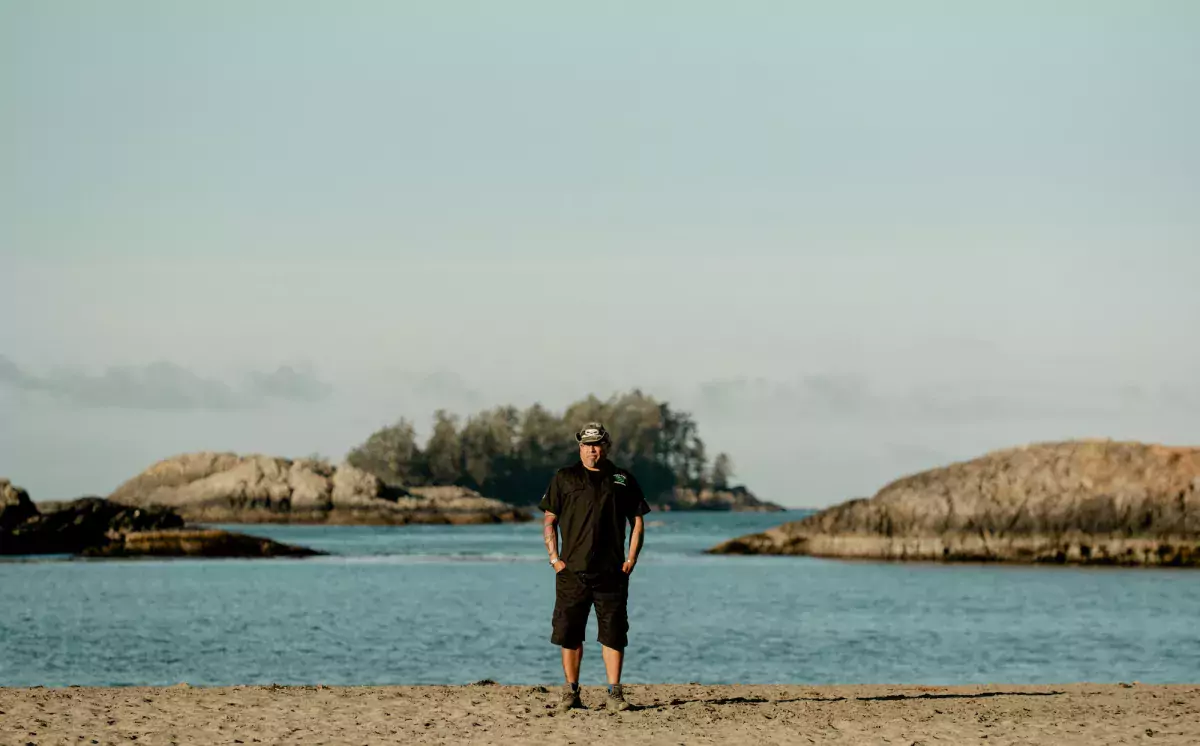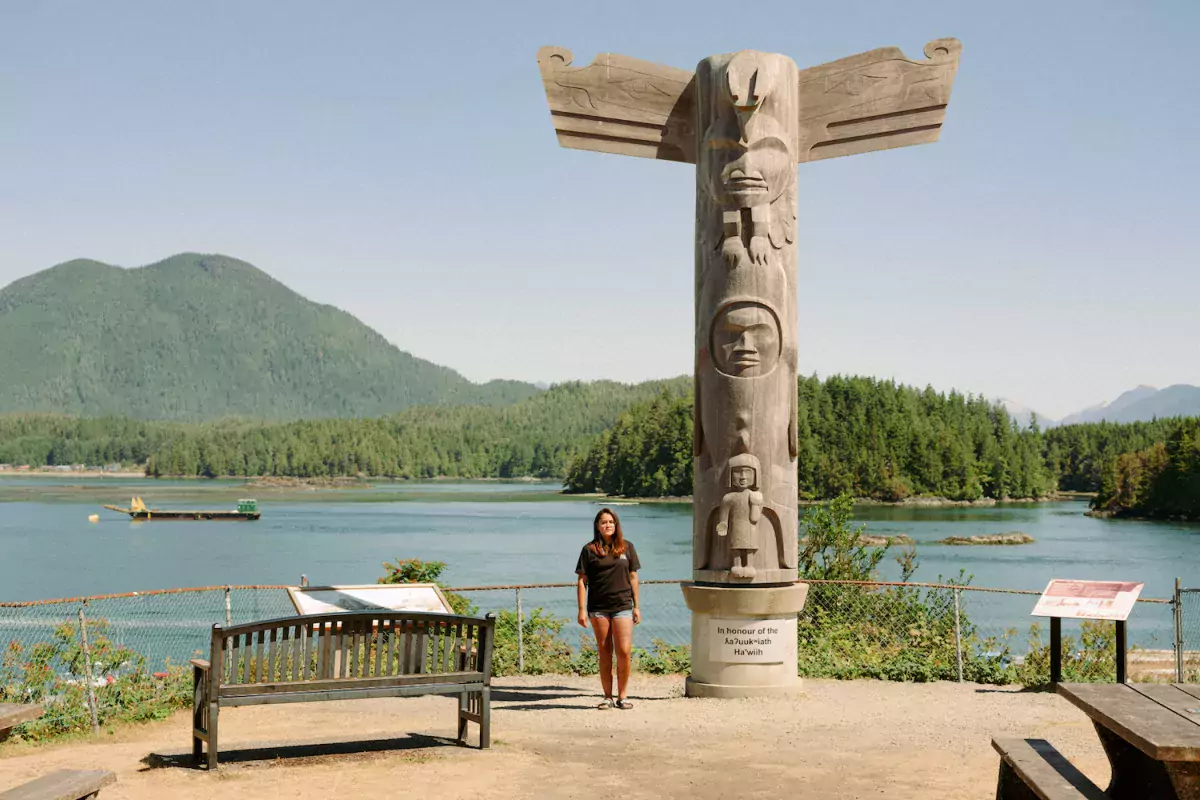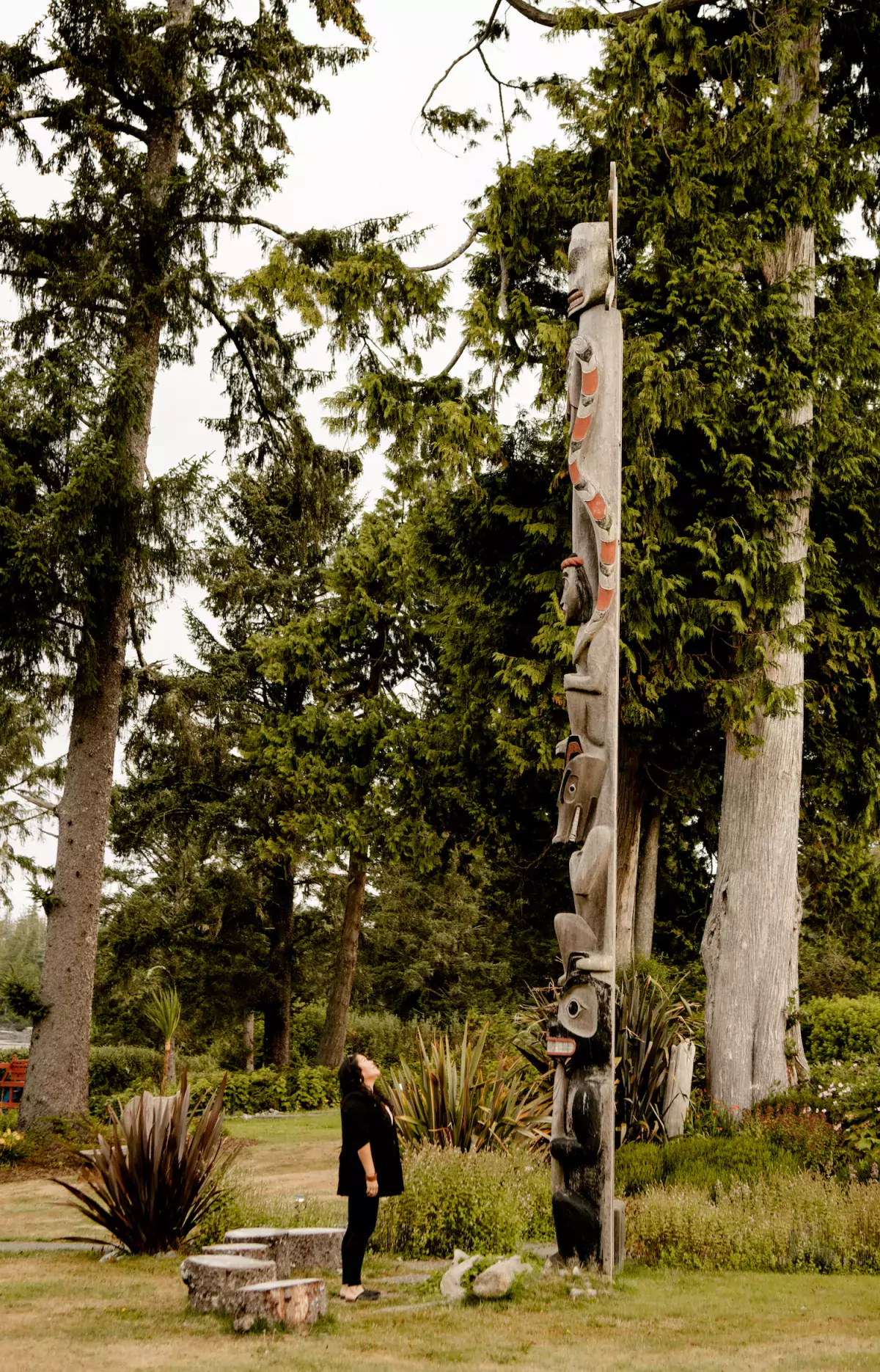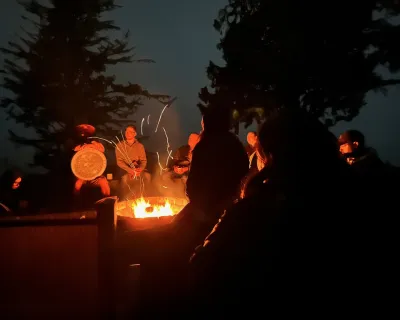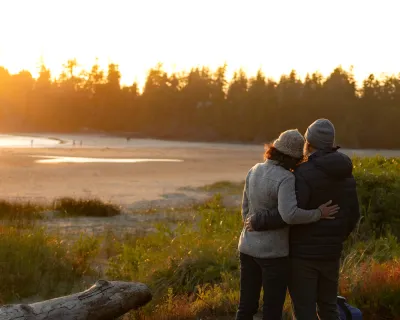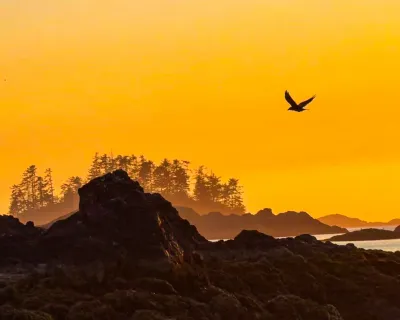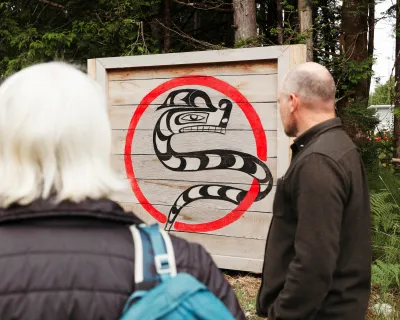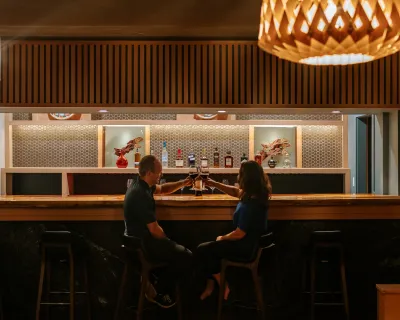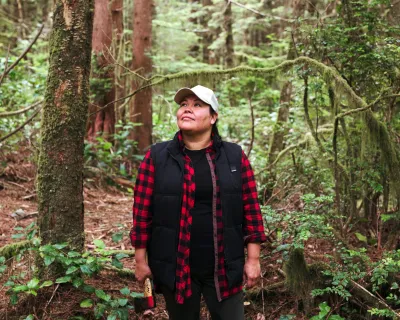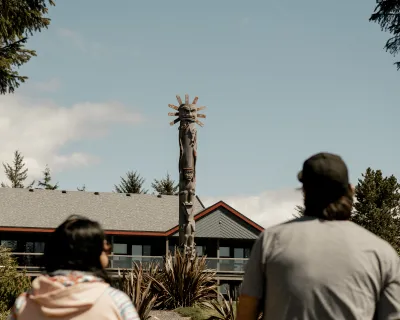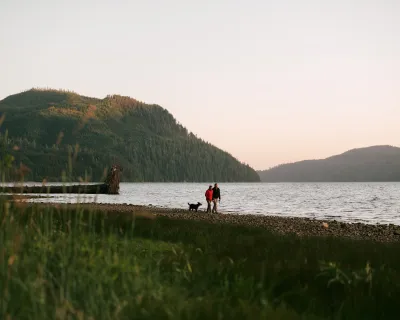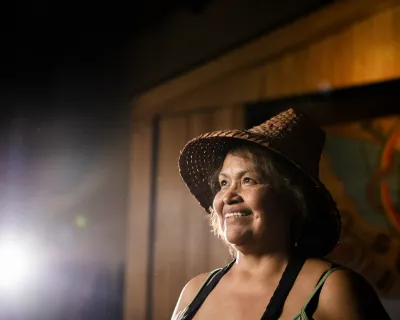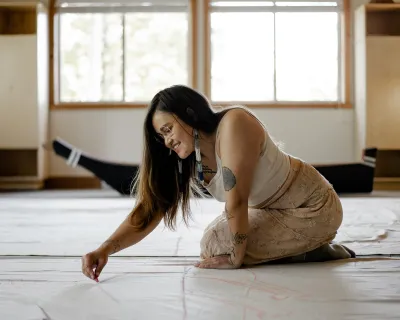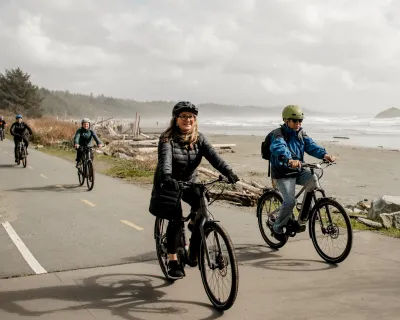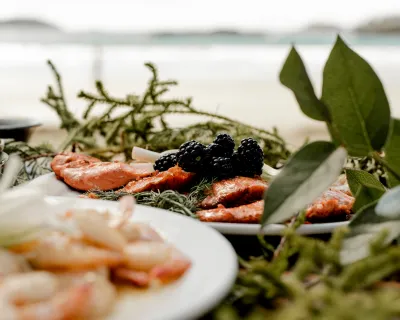TAKE ʔiisaak PLEDGE TO GUIDE RESPECTFUL TRAVEL ON VANCOUVER ISLAND
Tofino has been home to Tla-o-qui-aht First Nation citizens for over eight to ten thousand years. Those living here ask visitors and other locals to preserve this special place by taking the ʔiisaak pledge #Indigenouscoastbc
Tofino, BC within Tla-o-qui- aht First Nation Homelands — As a young girl, Maria Clark recalls standing in her grandfather’s garage in the Tla-o-qui-aht First Nation village of Esowista with a dead deer hanging on the wall. He used the animal to teach her the principles of ʔiisaak by sharing how every part of the animal would either be eaten or used to make drums and regalia.
“Whatever was left over, we would return to the land,” she recounted her grandfather saying. These teachings cast an early imprint on her that modeled the importance of being accountable to those around her.
WATCH: principles of the ʔiisaak pledge, Tla-o-qui-aht First Nation
“A core aspect of being Tla-o-qui-aht and being Nuu-chah-nulth is understanding my role as a mother, grandmother, aunt and sister,” she said.
“How I carry myself [matters] because there’s little eyes looking up at me and there’s older eyes counting on me.” ʔiisaak, which means “respect” in Nuu-chah-nulth, touches nearly every element of life on the west coast of Vancouver Island, explained Clark.
“It’s a sharing of culture,” she said. Be it respecting the land you walk on, respecting your community members or respecting yourself, Clark said ʔiisaak is woven into the fabric of Nuu-chah-nulth people.
With this in mind, Clark said she encourages guests visiting Tofino and Tla-o-qui-aht homelands to take the ʔiisaak pledge, a new initiative created by the Tla-o-qui-aht Tribal Parks.
After taking the pledge, Tla-o-qui-aht First Nation Lands and Resources Manager Saya Masso said he hopes the 600,000 people who visit Tofino every year will feel a sense of commitment to the homelands they’re visiting.
Travel respectfully on Tla-o-qui-aht homelands by taking the ʔiisaak pledge
“We hope it instills visitors with a desire to respect the ecosystems and the services they provide by leaving it better than they found them,” he said.
Some actions Masso said travelers can take while visiting Tofino are keeping their animals on leash so they don’t “destroy” off-trail networks, respecting the current Stage 3 water restrictions and packing out what they pack in.
“The pledge proactively engages with people on how to be a respectful traveler,” he said. “To leave guests feeling like they’re engaged and connected to the watershed they’re visiting.”
Hayden Seitcher, Tla-o-qui-aht First Nation warrior program coordinator, said the region’s increase in tourism has created a “weird imbalance.”
On the one hand, Seitcher said the local population relies on tourism to support their livelihoods. On the other, the land is “hurting” from the refuse visitors leave behind.
Taking the ʔiisaak pledge “changes that energy” by creating more of a balance, he said. Tla-o-qui-aht artist Ivy Cargill-Martin said the pledge also encourages visitors to educate themselves on whose homelands they are visiting.
“It’s about learning to respect your surroundings and how each step you take is a footprint that affects everyone in a different way,” she said.
Clark echoed that sentiment by saying “Tofino is super trendy and desirable,” which leads people to showing up without knowing what drew them.
Make each step with respect, take the Iisaak pledge
“I hope that having the pledge out there and promoting it gives people the foresight to investigate more about our homelands,” she said. Through connecting with the place they’re visiting, Clark said travelers will develop a more realistic expectation of what is available.
“There’s not a Starbucks on every corner,” she said. “It’s a culture shock for some people.” When Clark thinks about her homelands, she is reminded of how her grandfather and great-grandfather “fought to keep this land intact.”
The pledge is acknowledgement of “how much energy, effort, love and respect” there is for the land, she said.
“I hope the pledge resonates with visitors,” Clark said. “And gives them a sense of home and responsibility to cherish and respect [the land].”
Take the ʔiisaak pledge
You can find the seven different principles of ʔiisaak and take the pledge through the Tla-o-qui-aht Tribal Parks website.
Here you'll learn how you can:
support Tribal Parks allies during your visit
engage in regenerative tourism by becoming a Tribal Parks ally
ZenSeekers and Tla-o-qui-aht First Nation thank you for taking the steps to travel with respect, appreciate the local culture and preserve the local environment when you travel on Tla-o-qui-aht homelands, or wherever you go.
For more on the iissak pledge and the Tla-o-qui-aht approsch to life please read this ZenSeekers coverage.
Like Our Facebook Page
